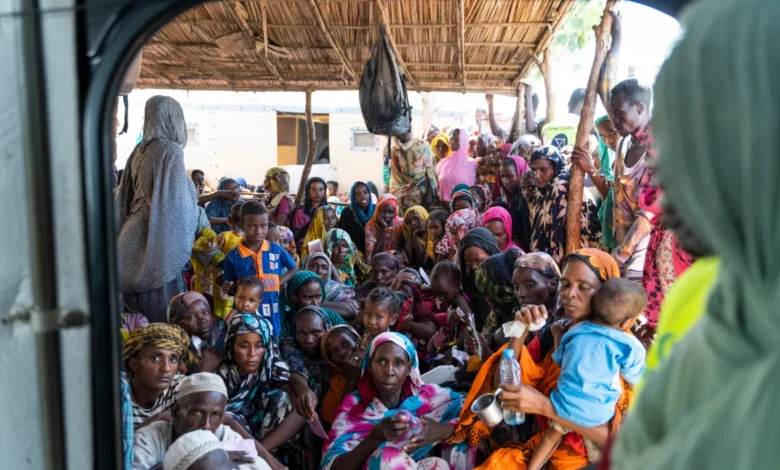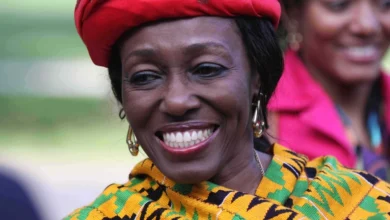
Unimaginable Suffering: The Plight of Sudan’s Displaced
Sudan now faces the world’s largest war-related displacement crisis. More than 10 million people have fled their homes due to the ongoing conflict. This mass exodus has created unprecedented displacement levels inside Sudan and beyond its borders. These people endure brutal atrocities and unthinkable suffering while seeking safety.
Displaced communities struggle with severe food shortages and widespread sexual violence. The humanitarian crisis grows worse each day as people lack basic necessities. Reports show targeted ethnic killings and systematic destruction of vital infrastructure. Perpetrators of violence roam free with complete impunity. The international community doesn’t deal very well with the situation, and humanitarian efforts face major obstacles due to limited access and severe funding shortages.
Scale of Displacement and Humanitarian Crisis
Sudan’s displacement crisis has reached staggering levels according to the International Organization for Migration. The numbers paint a grim picture – 9.9 million people have been forced from their homes across Sudan’s 18 states. These numbers show the world’s worst war-related displacement crisis that surpasses both Ukraine and Syria.
The displacement numbers tell a stark story:
| Category | Number Affected |
|---|---|
| Internal Displacement | 9.9 million |
| Pre-war Displaced | 2.8 million |
| New Displacement | 7.1 million |
| External Refugees | 2 million |
More than 2 million people have fled to neighboring countries as the crisis spills beyond Sudan’s borders. Most displaced people now live in areas where famine looms, and they face severe shortages of basic resources and services.
Neighboring countries feel the strain of this crisis, and Chad bears the heaviest burden as the main destination for Sudan’s refugees. Chad’s current situation shows:
- A surge of 871,000 new refugees since April 2023
- A total refugee population of 1.1 million, making it Africa’s largest host per capita
- 38% of Sudan’s total external refugee population now live there
Chad’s situation highlights the regional crisis as the country grapples with its own challenges of high poverty and food shortages. East Chad’s communities and refugees share similar hardships, with 42% of people living below the poverty line. Refugee numbers in the last ten months have grown larger than during the entire 20-year Darfur war, which puts massive pressure on limited resources.
Aid organizations expect the situation to worsen as displacement numbers continue to rise while the conflict goes on. Supply chains and markets have broken down, causing food prices and essential goods to skyrocket. Many displaced people can no longer afford basic necessities.
Horrific Violence and Human Rights Violations
Sudan’s brutal conflict has freed unprecedented violence against civilians through systematic attacks on specific ethnic groups. RSF and allied militias that spread terror in West Darfur have killed masses of Masalit people. Their actions resulted in an estimated 10,000-15,000 deaths in El Geneina alone. United Nations investigators found mass graves with 87 Masalit civilians, which shows the scale of ethnic targeting.
The casualties have reached staggering numbers in key areas:
| Location | Estimated Casualties |
|---|---|
| El Geneina | 10,000-15,000 |
| Ardamata | 800-1,300 |
| Eastern Al Jazeera | Over 500 |
RSF and allied militias have turned sexual violence into a devastating weapon of war against women and girls. Healthcare providers documented 262 survivors of sexual violence between April 2023 and February 2024. The survivors’ ages ranged from 9 to 60 years. RSF members committed a horrific act when they abducted 24 women and girls and subjected them to sexual slavery. Many survivors now deal with severe physical injuries and psychological trauma without access to essential medical care.
The systematic destruction targeted civilian infrastructure including:
- Cultural heritage sites, including the Masalit Sultanate palace
- Educational facilities, with 10,400 schools shuttered
- Healthcare facilities, leaving 80% of hospitals non-functional
- Essential water infrastructure, affecting over 300,000 people in Khartoum
RSF’s destruction campaign reaches beyond immediate casualties and targets Sudan’s societal fabric. Systematic looting and destruction have devastated Khartoum’s cultural centers, universities, and museums. Attackers targeted the National Museum, which houses some of the world’s oldest mummies. The House of Heritage, a vital cultural center, lies in complete ruins along with its priceless folklore collections.
International observers view these atrocities as potential crimes against humanity, with evidence pointing to coordinated efforts to eliminate specific ethnic groups. The United Nations Fact-Finding Mission concluded these acts amount to war crimes, including torture, rape, and persecution based on intersecting ethnic and gender grounds.
Dire Humanitarian Conditions
Sudan faces a catastrophic humanitarian crisis that affects 25.6 million people who struggle with severe food insecurity and devastating living conditions. The situation worsens faster and creates survival challenges for displaced populations.
Severe food insecurity and risk of famine
A stark reality reveals that 755,000 people face catastrophic phase-five food insecurity conditions across ten states. The crisis has reached such devastating levels that families take desperate measures to survive. Reports show people eating tree leaves while mothers feed their children dirt to fill their empty stomachs.
Simple necessities like shelter and clean water remain scarce
Simple necessities have reached alarming levels in displacement camps. The situation continues to worsen each day.
| Basic Need | Current Status | Required Standard |
|---|---|---|
| Daily Water Supply | 6 liters per person | 20 liters (WHO recommendation) |
| Shelter Access | 40% without proper shelter | 100% coverage needed |
| Sanitation Facilities | Severely limited | Universal access required |
People face impossible choices between drinking, cooking, and personal hygiene. Health conditions deteriorate rapidly throughout camps and settlements because of this severe water shortage.
Health risks and disease outbreaks
Sudan’s healthcare system has collapsed and triggered multiple health emergencies:
- 70-80% of health facilities in conflict zones cannot function
- Cholera, measles, and malaria outbreaks have spread widely
- Medical supplies and personnel face critical shortages
Children face the harshest impact of this crisis. 3.7 million children under five will likely suffer from acute malnutrition this year. 730,000 of these children could face life-threatening severe acute malnutrition. Disease outbreaks have grown worse because malnutrition, poor sanitation, and limited medical care have created dangerous health risks for vulnerable populations.
Survivors of trauma cannot access psychological support as mental health services have disappeared. These challenges meet to create what experts call one of the world’s most severe humanitarian emergencies. The situation worsens each day as people struggle to access simple services.
International Response and Challenges
International humanitarian response organizations face unprecedented challenges in Sudan’s crisis. They struggle with severe operational constraints while critical funding gaps persist. The 2024 Humanitarian Needs and Response Plan needs $9.91 billion to help 14.7 million people, but has received only 49% of the required resources.
Underfunded humanitarian efforts
Humanitarian response sectors face a severe funding crisis:
| Response Plan | Required Funding | Current Status |
|---|---|---|
| Sudan Response | $9.91 billion | 49% funded |
| Regional Refugee Plan | $5.51 billion | 25% funded |
| IOM Operations | $2.1 billion | 20% funded |
Limited access to conflict zones
Humanitarian organizations now face much harder conditions on the ground. Their ability to help has dropped by a lot due to several major challenges. Armed groups think over ways to block aid efforts. The problems include visa denials for humanitarian workers and strict limits on moving supplies through battle areas. Aid workers also face serious safety risks and complex bureaucratic hurdles that slow down their work.
The crisis hits hardest in Darfur and Kordofan. These regions have 1.7 million people who cannot get the help they need because aid groups cannot reach them. Aid organizations have found that the Sudanese Armed Forces and Rapid Support Forces actively create these obstacles. These actions might be considered war crimes.
Calls for increased global attention and support
UN Acting Under-Secretary-General Joyce Msuya paints a stark picture: “People in Sudan have endured 17 months of hell, and the suffering continues to grow. Decisive international action is urgent.” The United States leads donor support with more than $5.14 billion in humanitarian assistance since October 2022. Yet this substantial amount falls short of addressing the massive humanitarian needs.
International organizations have outlined three vital priorities that need immediate attention. They want all fighting to stop right away. Civilians must receive guaranteed protection. Humanitarian aid should flow freely through all available routes.
The world needs to step up its response quickly. Humanitarian organizations are asking donors to increase their funding significantly. They also want stronger diplomatic pressure on all parties involved in the conflict to make sure help reaches those who desperately need it.
Sudan’s humanitarian crisis shows evidence of immense human suffering. More than 10 million people face displacement from systematic violence and ethnic targeting. The crisis threatens 25.6 million people with food insecurity. Healthcare systems have collapsed and disease outbreaks create catastrophic conditions. Sudan’s crisis ranks among history’s worst humanitarian emergencies. Civilians face targeted attacks while essential infrastructure crumbles.
The world’s response falls nowhere near enough, with less than half of the needed $9.91 billion humanitarian funding available. Sudan’s displaced populations need immediate help and long-term solutions. Millions of lives depend on the world’s response. The global community must protect civilians, ensure aid reaches those in need, and work to build lasting peace in Sudan.






[…] Critical medical supplies sent to Gaza provide ground resources needed for detailed healthcare delivery. The shipment has vital supplies to treat malnutrition, handle trauma care, perform surgical procedures, and deliver primary healthcare services. […]
[…] can return to their neighborhoods in northern Gaza after seven days. A major humanitarian aid surge starts, and up to 600 trucks will enter Gaza daily. Palestinian police will maintain […]